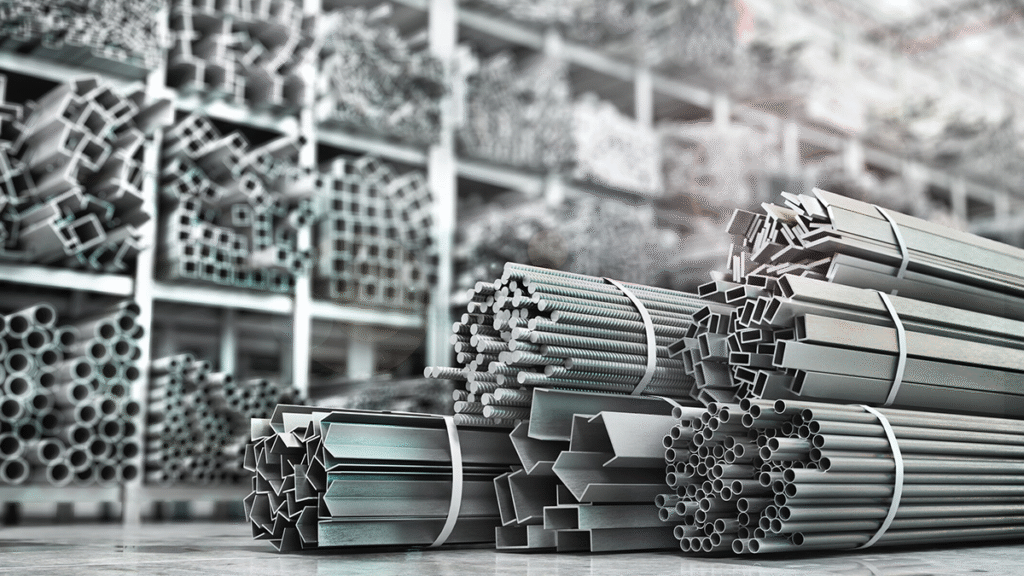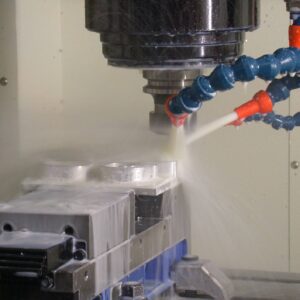Due to its flexibility and multiplicity, steel is essential in many industries. It is an iron-carbon alloy. The main types of steel, including carbon, alloy, stainless, and tool steels, have different properties for construction, automotive, medical, and aerospace applications. Consequently, steel’s composition provides strength, endurance, and the capacity to take on shapes in many sectors. Along these lines, this article will guide on the four main types of steel. Let’s jump into it.
Carbon Steel
Carbon steel is a standard steel alloy among the main types of steel. It contains iron and carbon. Carbon concentration determines its qualities and divides it into three subtypes. These are low, medium, and high-carbon steel. Mild or low carbon steel has up to 0.3% carbon and is malleable and ductile for bending and welding. Medium carbon steel has 0.3%–0.6% carbon and is strong and ductile for more severe forming and machining. High-carbon steel has more than 0.6% carbon and is stronger and harder but less ductile. This renders it harder to weld and shape.
Applications of Carbon Steel
Carbon steel is used in building and infrastructure owing to its strength and flexibility. Beams, rebars, and pipelines employ low-carbon steel due to its formability. Medium carbon steel makes vehicle panels and chassis that need strength and ductility. High-tension wires and springs utilize high-carbon steel for durability and endurance. These examples validate the appropriateness of each carbon steel subtype according to its carbon content and characteristics.
Features and Drawbacks of Carbon Steel
Carbon steel is used in many sectors for its affordability and resourcefulness. Due to its carbon concentration, its mechanical characteristics range from flexible wires to strong building materials. Nevertheless, corrosion is a drawback of carbon steel. That’s especially in lower alloyed versions. Carbon steel may oxidize and decay without coatings or alloying in corrosive settings. In outdoor or moisture-prone applications, galvanization or corrosion-resistant coatings are needed.
Alloy Steel
Nickel, copper, aluminum, iron, and carbon distinguish alloy steel. It is also one of the main types of steel. The elements are alloyed in particular quantities for physical and chemical qualities. Nickel increases toughness and impact strength. Copper resists corrosion. Due to their varied compositions, alloy steels meet explicit uses and performance. Steels with different mechanical properties and heat treatment reactions may be made due to this compositional flexibility.
Applications of Alloy Steel
Alloy steel is utilized in automotive, pipeline, and mechanical projects. Its strength and customized qualities are ideal for automotive components, including gears, axles, and crankshafts. They must survive stress and temperature changes. Corrosion resistance is important in pipeline construction in hostile locations, including underwater or subterranean. Its machinability is excellent for multifaceted mechanical components in large equipment and engineering applications. The usefulness of alloy steel has made it key in contemporary manufacturing and construction.
Features of Alloy Steel
Alloy steel is stronger and more corrosion-resistant than carbon steel. These qualities are due to steel alloying components. Molybdenum and chromium strengthen it for high-stress applications. Machinability expedites efficient shape and fabrication while plummeting production expenses. Some alloy steels are very wear-resistant in friction and abrasion applications. These qualities render alloy steel striking in industries that need strength and dependability.
Stainless Steel
Chromium must be at least 10.5% of stainless steel to endure corrosion. This makes it unique among the main types of steel. The microstructure of stainless steel divides it into numerous types. For example, ferritic stainless steels are magnetic due to their iron and chromium concentration and low carbon content. Most austenitic stainless steels include chromium, nickel, manganese, or nitrogen. They have good formability and corrosion resistance. This non-magnetic material hardens with cold working. Martensitic, heat-treatable stainless steels are stronger and have more hardness but less corrosion resistance due to their high carbon and low chromium content.
Applications of Stainless Steel
Hygienic and durable uses need stainless steel. Its quick sterilization and corrosion resistance are perfect for surgical equipment. The non-reactivity and simple cleaning suit food processing equipment, kitchen utensils, and storage containers. Thanks to its aesthetics and environmental endurance, stainless steel is employed in building facades, railings, and structural parts.
Features of Stainless Steel
Because of its chromium-rich oxide layer, stainless steel offers corrosion resistance. With its visual appeal and properties, over 150 grades have been created for many situations and purposes. Grade 304 stainless steel possesses 18% chromium and 8% nickel. It is esteemed for its corrosion resistance and workability for applications. Grade 316 stainless steel with molybdenum resists chlorides in maritime conditions. So, stainless steel is multipurpose and can handle many uses.
Tool Steel
Given its specific composition, tool steel is heat-resistant and hard among the main types of steel. Commonly, it contains tungsten, molybdenum, cobalt, and vanadium. These elements help steel survive high temperatures without losing form or strength. For instance, tungsten increases steel’s hardness at high temperatures. In contrast, vanadium augments wear resistance and toughness. Molybdenum inhibits brittleness and strengthens steel at high temperatures.
Applications of Tool Steel
With its strength and durability, tool steel makes precision tools, drilling equipment, and cutting tools. It is used in high-speed drill bits because it stays hard at high temperatures. In the automobile sector, it makes molds and dies for high-pressure conditions. The metalworking and woodworking industries employ it to manufacture cutting tools since it keeps sharp edges under stress.
Features of Tool Steel
Tool steel is outstanding in abrasion resistance and form preservation. Applications with repeated or high-impact stress need this durability. In hammer and punch manufacture, tool steel must tolerate impact without deforming. Apart from that, precision CNC tooling counts on steel’s thermal stress stability for accuracy and permanence. Tool steel is also appropriate for machinery components that experience friction and erosion attributable to its wear resistance.
Methods of Steel Heat Treatment
The main types of steel heat treatment include various methods to alter the metal’s properties. E.g., spheroidizing softens and ductileizes carbon steel while heating it to 1290°F for 30 hours. Second, full annealing makes carbon steel flexible while heating it over its critical temperature. Process annealing heats low-carbon steel to remove stress. Isothermal annealing heats high-carbon steel over its critical temperature and cools it gradually for a homogeneous microstructure.
Furthermore, normalizing carbon steel to the austenite phase and air-cooling it increases its strength and hardness. Quenching heats medium or carbon steel and swiftly cools it to make it hard yet brittle. Last but not least, quenched steel is tempered at 298–401°F to reheat and cool to its lower critical point. To suit explicit applications, each process customizes steel.
Steel Grading Systems
To classify the main types of steel and safeguard their proper use in many sectors, one must comprehend steel grading systems. Notably, they include ASTM and SAE standards. The ASTM method employs letters and numbers for broad categories (such as ‘A’ for ferrous metals) and particular qualities or variants of those categories. For instance, ASTM A36 defines carbon steel.
Instead, the SAE system is associated with the AISI and employs numbers. The first number recognizes the major alloying element. For instance, 1 is for carbon steel, and 2 is for nickel steel. At the same time, the last two digits show the carbon content in hundredths of a percent. SAE 3040 specifies 0.40% carbon molybdenum steel. These grading methods are vital for material quality and uniformity. They help engineers and manufacturers pick steel and enable worldwide materials science commerce and communication. Hence, these methods classify steel by tensile strength, corrosion resistance, and heat tolerance, so engineers and producers make project selections.
Visit SHANENTECH to pick the correct steel grade and type. All your steel demands are met.




